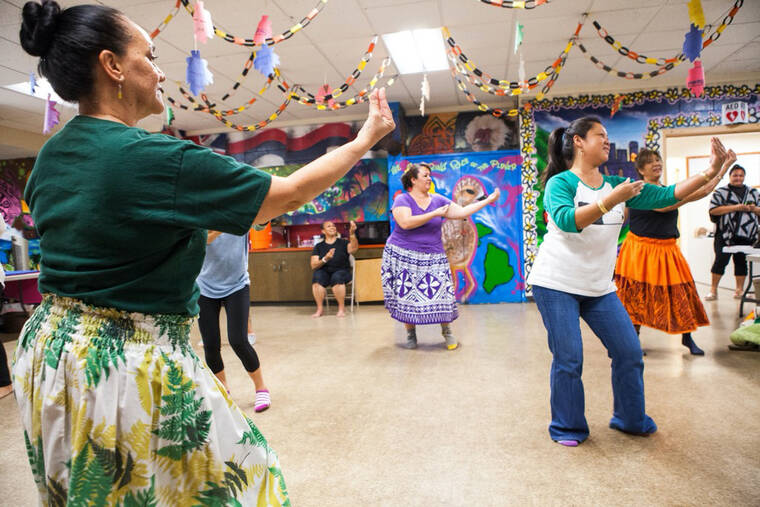A new University of Hawaii study has found that one-quarter of Hawaii residents have danced or still dance hula, officials announced last month. Researchers say these findings are groundbreaking because they consider it the first time the prevalence of hula dancing in the islands has been measured scientifically.
The study — a partnership with UH Manoa’s Office of Public Health Studies, the Hawaii Department of Health and UH’s John A. Burns School of Medicine’s Department of Native Hawaiian Health — also showed that nearly half of Native Hawaiians in the islands have participated in hula. That includes 65% of Native Hawaiian women and 31% of men. Engagement with hula was also strong across gender, age, education, income and health status, researchers said.
Mele Look, senior adviser and health researcher at the JABSOM’s Department of Native Hawaiian Health, said having this data reinforces the importance of hula in our diverse communities. Look, a hula dancer and study collaborator, said they plan to use this data to develop new culturally based programs that address public health, as well as invest more in ones that already exist. She said some health insurance companies also are looking at ways to encourage more people to dance hula, such as covering monthly tuition costs.
Prior to the study, Look said the closest data they had to quantify the popularity of hula in the islands was a self-reported database of halau.
“Hula is iconic to Hawaii. And hula has been integrated into the general population so much,” said Look, who has been dancing hula for about 50 years, 20 of which have been under kumu hula Mapuana de Silva. “My kumu has seen that in multitudes of ways, how hula has helped dancers — not just physically but emotionally and spiritually because you’re connected to a group and also connected to something greater. She sees transformation in dancers.”
To get this data, questions about hula participation were included for the first time in the 2018 and 2019 Behavioral Risk Factor Surveillance System, a national tool that provides public health information in each state. Hawaii researchers then analyzed the data, which drew from more than 13,500 Hawaii responses.
The study also builds on past research, led by the Burns school’s Department of Native Hawaiian Health and Look, that showed that hula can help to reduce hypertension and improve blood pressure for Native Hawaiians.
Look said the idea to study hula and health came about several years ago when she talked to revered hula master Pat Namaka Bacon, who had suffered a stroke at the time. Look said Bacon told her that hula played a key role in her recovery and that she’d practice all of the time, even while standing at the sink washing dishes and sitting down to watch TV.
Tetine Sentell, interim dean of UH’s Thompson School of Social Work and Public Health and the study’s lead, agreed that the findings build on generations of cultural traditions and foundational work by Look and others.
Sentell added that the data can also help with finding new culturally relevant ways to promote physical activity. In the islands, just one in four adults get the recommended physical exercise.
“The connections and the mental, emotional and spiritual wellness, as well as the physical activity that can come from hula, are such important opportunities in this moment,” Sentell said. “This is a lifetime opportunity for health and wellness.”
———
Jayna Omaye covers ethnic and cultural affairs and is a corps member of Report for America, a national service organization that places journalists in local newsrooms to report on undercovered issues and communities.

